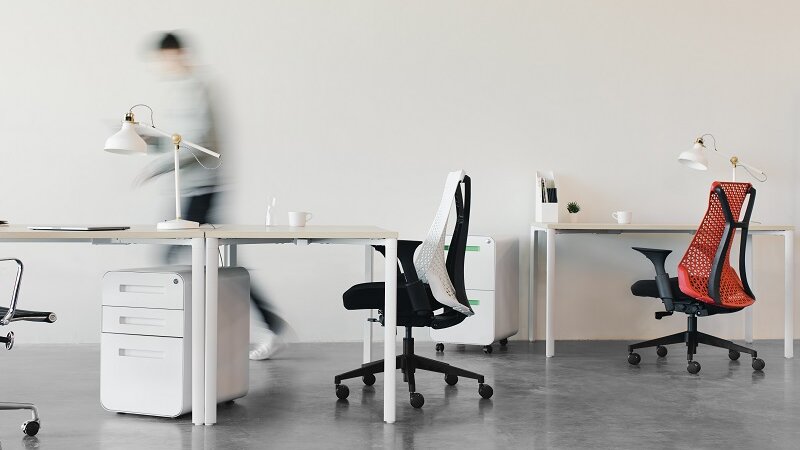The Impact of Ergonomics on Your Work and Health
Episode #5 of the course How to set up a productive working environment by Melissa Chu
Yesterday, you cleaned up your digital files to make it easier to find the information you need. Today, we’ll go over your office ergonomics.
Creating an Ergonomic Office
When your furniture is arranged properly, you’re less likely to experience aches and pains that lead to long-term negative health effects. You also have more energy, which increases productivity and lowers stress.
The set-up of your office furniture dictates your posture. If your desktop monitor is too high, you have to crane your neck up. If it’s too low, your back is slouched. You can’t improve your posture if your furniture is positioned incorrectly.
To achieve proper posture, here are the three steps you should follow:
1. Adjust your chair.
Your chair height should be adjusted so that your back is straight, shoulders are down, and feet are flat on the floor. Your thighs should be parallel to the floor and your knees bent at a 90-degree angle (assuming that you are using a sitting desk, not a standing desk).
Your back should be resting fully against the chair. To do so, angle the chair so that it’s a little over a 90-degree angle, at around 100 to 110 degrees in a slightly reclining position.
After sitting in your chair, don’t forget to “scoot” to maintain the right distance between your body and the monitor. Make sure the space below your desk is empty so that your feet have a spot to rest.
2. Line up your chair, keyboard, and monitor.
If you were to draw a line between the center of your chair, your keyboard, and monitor, it should be straight. That means not putting your monitor on the left side of your desk, while your keyboard is in the center. When you align the three components, you don’t have to twist your head, neck, or body while you work.
Your monitor, keyboard, and mouse should be evenly spaced. Position your monitor so that it’s at arm’s length. Then, position your keyboard and mouse so that your forearms are parallel to the floor.
3. Adjust your monitor height correctly.
Now, it’s time to adjust your monitor height. The top of the monitor should align with your eye level since your eyes naturally rest about six inches below to the center of the screen. If needed, you can place a book or similar object to prop up the monitor to the right height.
After you have placed your monitor at the correct height, angle it slightly up towards your face. When positioned properly, you shouldn’t have to hunch forward or crane your neck to read the lower part of your screen.
Finished? Now that your office furniture is ergonomically designed, let’s move on to the topic of food and drink at your desk.
Should You Eat and Drink Where You Work?
Eating at your desk is a sticky subject. Many of us enjoy a beverage at our desks, but the topic of food becomes a debate.
Here are a few reasons why you should separate food and work:
• Keeping a supply of snacks nearby leads to mindless eating, contributing to weight gain.
• When food isn’t within reach, you’re more likely to get off your chair, giving you a chance to stand and walk.
• You’re more productive at work when you allow yourself periodic breaks rather than working and eating at the same time.
• If you work nearby coworkers or colleagues, food odors and sounds can be irritating to others.
Yes, you can go to the kitchen and bring back a snack, but your desk shouldn’t turn into a dining room. That means not storing food on your desk, or eating full meals in front of your computer.
A cup of coffee or tea and a snack are fine to enjoy on your desk. After all, these can be consumed while working, unlike eating a full meal. The point is, your workspace is designed for you to get work done, not to dine.
Here are a couple of ways you can eat well during work:
• Designate a spot for meals – If you work from home, it can be the kitchen. If you work in an office, it can be a separate room or space.
• Check that your desk and cabinets are clear of food – If you store snacks in your desk, put them in a kitchen area instead to avoid snacking out of boredom.
Now, you should have a comfortable, food-free work environment. Tomorrow, we’re going to look at how sounds and music affect your productivity.
Melissa
Recommended reading
How Late Should You Be Drinking Your Daily Coffee?
Recommended book
The Healthy Meal Prep Cookbook: Easy and Wholesome Meals to Cook, Prep, Grab, and Go by Toby Amidor
Share with friends

